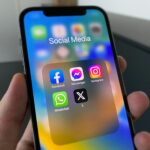Botox is booming in popularity, to say the least. The global botulinum toxin market (the ingredient inside of the injections) is anticipated to reach $15.4 billion by 2030, and nearly 3.6 million people received cosmetic injections in 2021 – the year of the post-pandemic botox boom.
With high forecasted demand, where does botox interest currently stand? Who’s likely to invest in a cosmetic glow-up? Does social media influence people to convert? CivicScience took a deeper look into the key trends and factors shaping the growing botox industry.
Gen Z has the most experience with non-invasive cosmetic procedures, while Millenials are the biggest intenders.
According to the latest CivicScience data, 8% of U.S. adults have tried non-invasive cosmetic treatments, such as botox injections, dermal fillers, and enzyme peels (excluding those unaware of these treatments). Seven percent intend to try it, and 84% are uninterested (n= 3,278).
Both usage and intent jump among young adults. Gen Z adults report the highest levels of usage than any other age group (15%), but Millennials are slightly more likely than Gen Z to want to give these procedures a shot (14%). Meanwhile, adults aged 35+ report the lowest levels of interest.
Women are also much more likely to have tried or plan to try (22%) these types of procedures than men (8%).
These botox buyers typically spend in the four digits for cosmetic treatments. According to The American Society of Plastic Surgeons, the average botox treatment costs between $300-$600, and hyaluronic acid fillers are about $682 per syringe. CivicScience data show that over half (55%) of those who pay for non-invasive treatments typically spend more than $1,000 annually. Forty-five percent spend less than $1,000 on average.
Over 4-in-10 are influenced by social media, with weekly TikTok users most interested in cosmetic treatments.
In today’s digital age, where influencers guide followers on which products and services to buy and social media filters transform people’s appearances, it’s no surprise that reports suggest social media is a driving force in cosmetic procedure interest.
The latest CivicScience polling data show that 44% of consumers who either have experience with elective treatments or intend to get them report their friends and contacts on social media influence the products they buy, which is nearly double the percentage of those uninterested in these types of procedures.
Looking at three video platforms popular for influencer content, data suggest weekly TikTok users are the most inclined to invest in cosmetic procedures (19%), which is more than double the percentage of TikTokers who’ve tried them (8%). Weekly YouTube and Instagram users are the most likely to report they’ve already received these treatments (10%).
How resilient are Botox sales in today’s economy?
Economic strains inevitably shape purchasing behaviors today. However, when it comes to elective procedures, sources suggest that demand may be resilient in the face of economic uncertainty.
According to the latest polling, more than a third of consumers who have tried cosmetic procedures report being financially ‘better off’ post-pandemic, which is more than any other group. Intenders report the highest levels of being the ‘same’ financially (51%) and the lowest levels of being financially ‘worse off’ (26%). Whereas, those uninterested in elective procedures report the highest levels of being financially ‘worse off’ post-pandemic (35%).
The data further suggest that users/intenders are two times more likely to be ‘not at all concerned about inflation’ (16%) than those uninterested in these procedures (8%). This group is also much likelier to report they’ve become ‘less price sensitive’ over the last 12 months (15%) than those who haven’t tried cosmetic procedures (9%).
More quick insights:
- About 6-in-10 adults who have tried non-invasive treatments say they’re more physically attractive than most people their age and gender, compared to just under a third of adults uninterested in these treatments.
- Sixty-three percent of Americans at least ‘somewhat agree’ that botox injections could be a risky health choice, up 10 percentage points from 2020.
- Users/intenders are nearly three times more likely to use mindfulness meditation apps like Headspace and Calm than those uninterested in cosmetic treatments (30%).
The cosmetic treatment industry isn’t showing any signs of aging in the near future. CivicScience will continue to report the latest trends and insights as this rapidly growing industry continues to shape up. If you’re interested in seeing how your consumers are responding to the latest cosmetic treatment trends, work with us.








